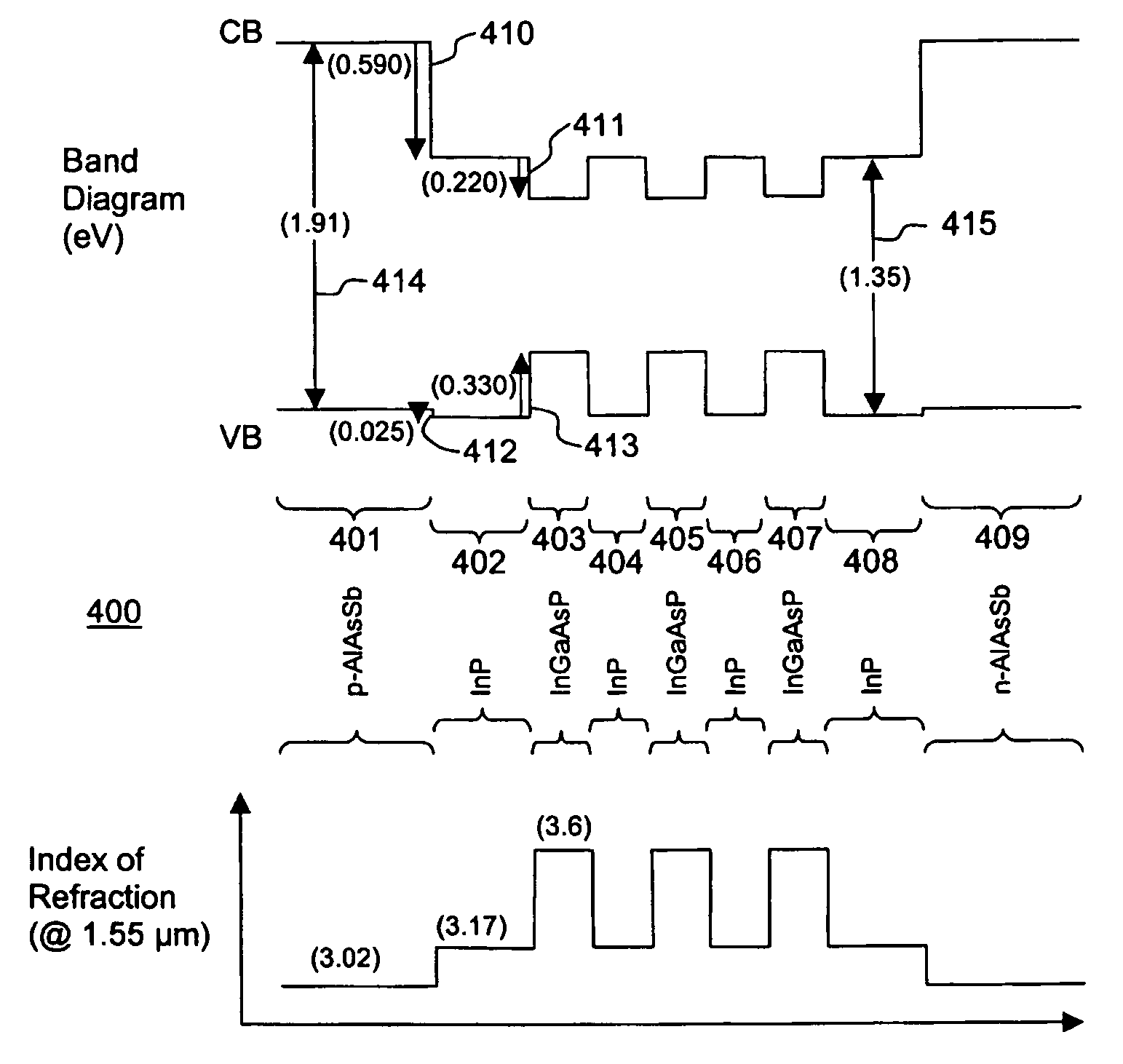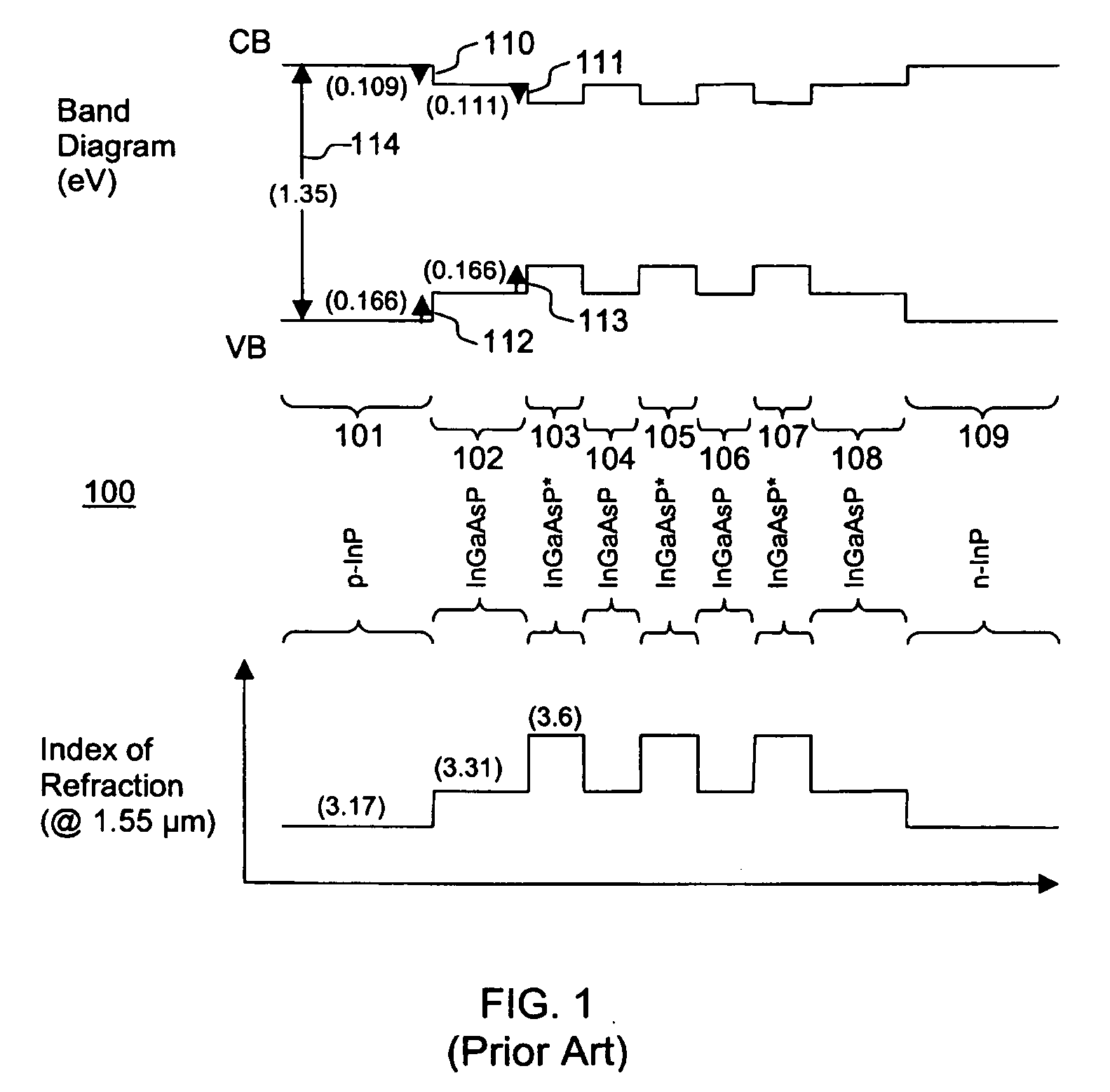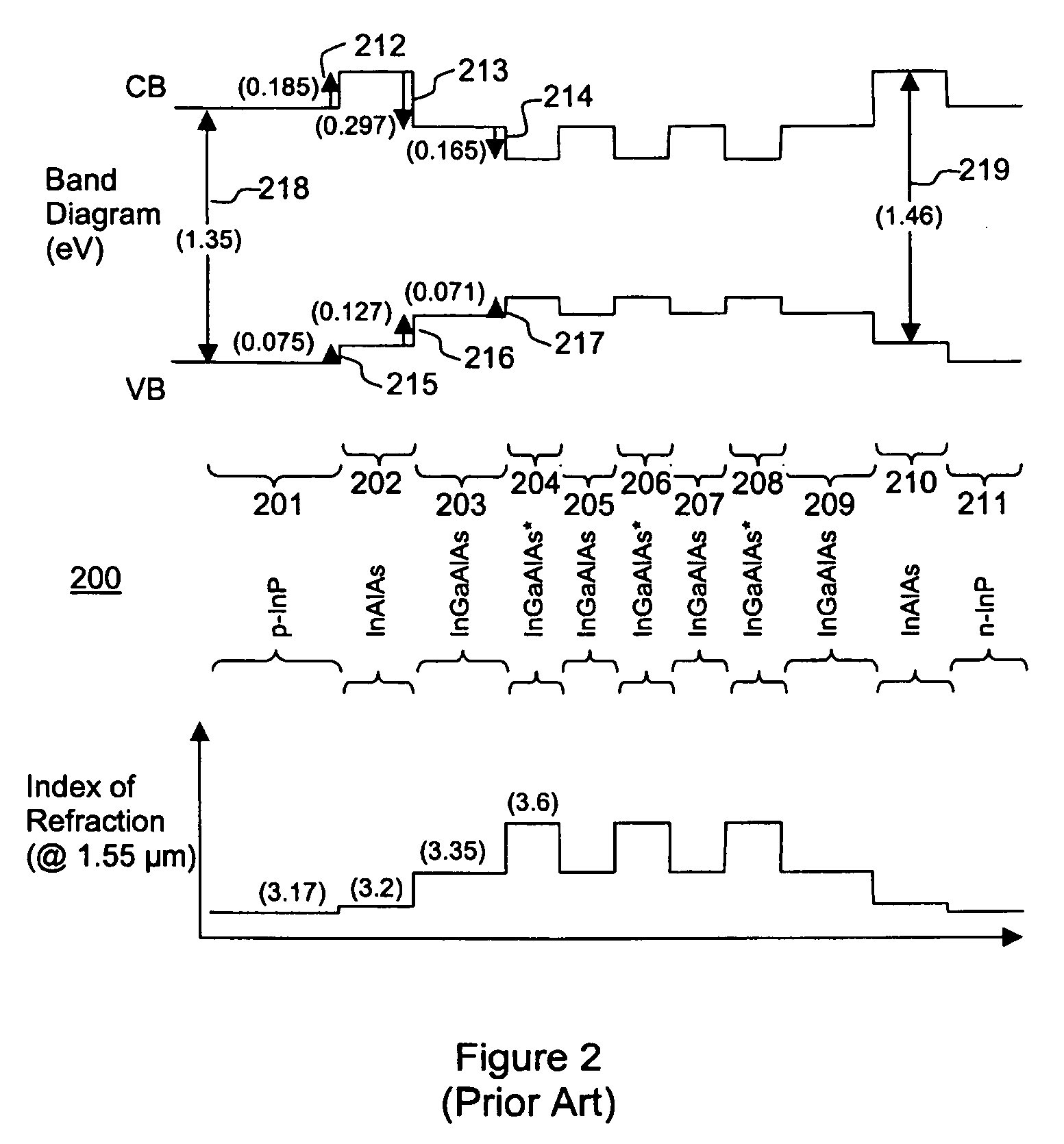High temperature laser diode
a laser diode, high temperature technology, applied in the direction of lasers, laser details, electrical equipment, etc., can solve the problems of increasing cost, complexity, power dissipation, and inability to meet the requirements of applications beyond 1.2 m, and achieve the effect of low power dissipation
- Summary
- Abstract
- Description
- Claims
- Application Information
AI Technical Summary
Benefits of technology
Problems solved by technology
Method used
Image
Examples
first embodiment
[0058]FIG. 4 illustrates the semiconductor laser structure of the present invention. This laser uses a InP material system traditionally used for telecommunications systems but with novel AlAsSb waveguide cladding layers. Referring to FIG. 4, the laser structure 400 comprises an active region comprising quantum wells 403, 405, 407 of InGaAsP and separated by barrier layers 404, 406 of InP. The active region is bounded by confinement layers 402, 408. The confinement layers 402, 408 are bounded respectively by cladding layer 401 of p-AlAsSb and cladding layer 409 of n-AlAsSb. These layers are deposited on a InP substrate (not shown). Referring to the band diagram of FIG. 4, the conduction band offset 410 between the cladding layers (401, 409) and the confinement layers (402, 408) is 594 meV. The conduction band offset 411 between the confinement and barrier layers (402, 404, 406, 408) and the quantum wells (403, 405, 407) is 220 meV. The valence band offset 412 between the cladding la...
second embodiment
[0061]FIG. 5 illustrates the semiconductor laser structure of the present invention using a newer material system than that of the embodiment of FIG. 4, and exhibits better high temperature performance. This laser uses AlAsSb waveguide cladding layers with InAlAs barriers and InGaAlAs quantum wells. Referring to FIG. 5, the laser structure 500 comprises an active region comprising quantum wells 503, 505, 507 of InGaAlAs, separated by barrier layers 504, 506 of InAlAs. The active region is bounded by confinement layers 502, 508. The confinement layers 502, 508 are bounded respectively by cladding layer 501 of p-AlAsSb and cladding layer 509 of n-AlAsSb. Referring to the band diagram of FIG. 5, the conduction band offset 510 between the cladding layers (501, 509) and the confinement layers (502, 508) is about 334 meV. The conduction band offset 511 between the confinement and barrier layers (502, 504, 506, 508) and the quantum wells (503, 505, 507) is 462 meV. The valence band offset ...
PUM
 Login to View More
Login to View More Abstract
Description
Claims
Application Information
 Login to View More
Login to View More - R&D
- Intellectual Property
- Life Sciences
- Materials
- Tech Scout
- Unparalleled Data Quality
- Higher Quality Content
- 60% Fewer Hallucinations
Browse by: Latest US Patents, China's latest patents, Technical Efficacy Thesaurus, Application Domain, Technology Topic, Popular Technical Reports.
© 2025 PatSnap. All rights reserved.Legal|Privacy policy|Modern Slavery Act Transparency Statement|Sitemap|About US| Contact US: help@patsnap.com



